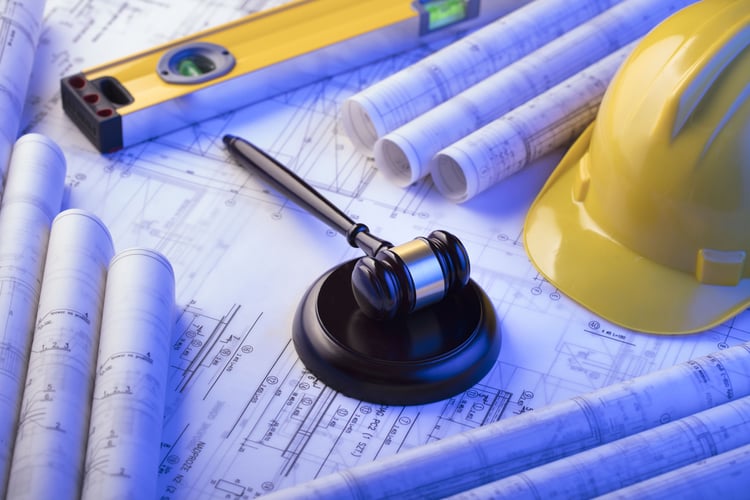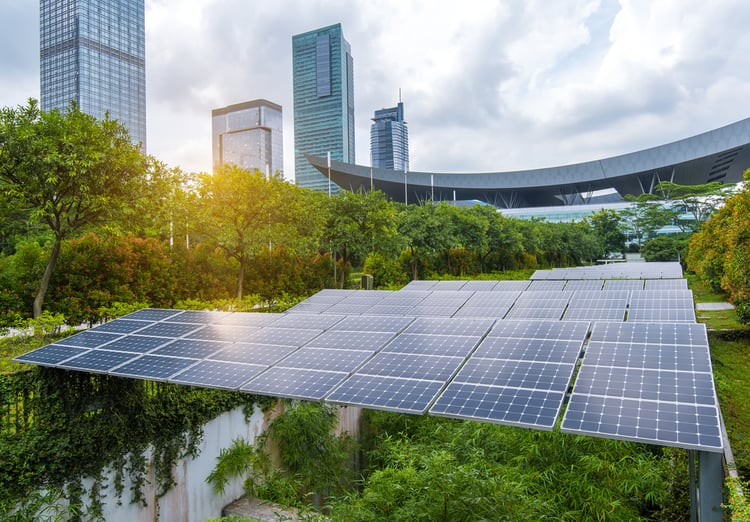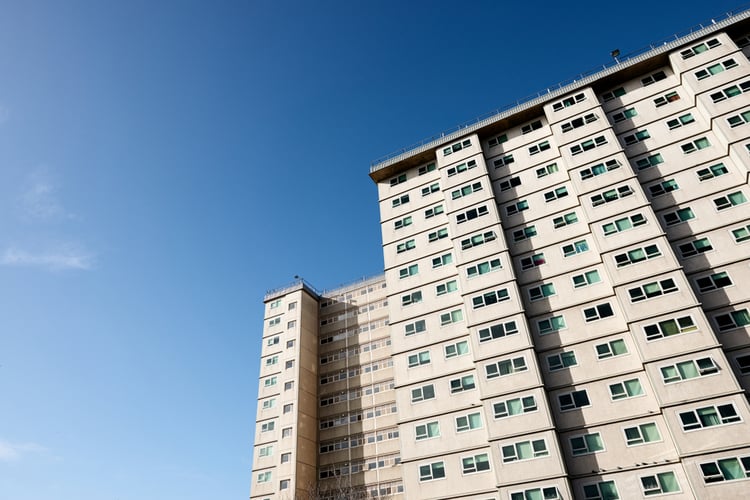Local Law 97 NYC | Know the Building Emission Limits | LL97

In April 2019, the New York City Council passed the Climate Mobilization Act, also known as the NYC Green New Deal. The Act included Intro 1253, which limits greenhouse gas emissions for buildings over 25,000 square feet.
- Intro 1253 became Local Law 97 in May 2019, and it covers nearly 60,000 buildings.
- The Office of Building Energy and Emissions Performance was created to manage all aspects of LL97/2019.
- LL97 also covers groups of two or more buildings with a total area above 50,000 sq.ft., if they are under the same tax lot or part of the same condominium project.
Meeting the emission limits is not financially viable for some buildings: affordable housing, houses of worship, some healthcare facilities, etc. However, LL97 provides alternative compliance options in these cases.
When Does LL97 of 2019 Come Into Effect?

Local Law 97 of 2019 will establish building emission limits all the way until 2050, achieving a total reduction of 80%. Initially, limits were established for two periods: 2024-2029 and 2030-2034.
- All buildings under LL97 must submit a yearly emissions report on May 1st, starting from 2025.
- The emissions report must be stamped by a Registered Design Professional: a Registered Architect (RA) or Professional Engineer (PE).
Building Emission Limits for 2024-2029 & 2030-2034
The following table summarizes the building emission limits for the first two periods. These limits are in kilograms of CO2 equivalent, per square foot and per year. “CO2 equivalent” is an emissions metric that considers all greenhouse gases, based on their equivalence to carbon dioxide.
| OCCUPANCY CLASSIFICATION | 2024-2029 LIMIT (kg CO2 eq/sf/year) |
2030-2034 LIMIT (kg CO2 eq/sf/year) |
| B - Ambulatory health, emergency response, and other critical applications listed in LL97 H - High Hazard I 2 & I 3 - Institutional |
23.81 | 11.93 |
| M - Mercantile | 11.81 | 4.03 |
| A - Assembly | 10.74 | 4.20 |
| R 1 - Residential (Hotels) | 9.87 | 5.26 |
| B - Business | 8.46 | 4.53 |
| E - Educational I 4 - Institutional |
7.58 | 3.44 |
| R 2 - Residential (Multifamily) | 6.75 | 4.07 |
| F - Factory | 5.74 | 1.67 |
| S - Storage U - Utility & Miscellaneous |
4.26 | 1.10 |
| I 1 - Institutional | 11.38 | 5.98 |
For example, if a building is classified under occupancy B (Business) and its floor area is 100,000 square feet, the emission limits for the two periods would be:
- 2024-2029 limit = 846,000 kg CO2 eq = 846 metric ton CO2 eq
- 2030-2034 limit = 453,000 kg CO2 eq = 453 metric ton CO2 eq
The penalty for emissions above the limit is $268/year/metric ton. If the building in the example above emits 950 metric tons of CO2eq in 2024, it exceeds the limit by 104 tons and it faces a penalty of $27,872 for that year.
- The building emission limits for 2024-2029 are designed to impact the top 20% of emitters, which means that most NYC buildings are already compliant.
- On the other hand, the 2030-2034 limits are designed to impact 75% of buildings, and meeting them will require more action.
If a building is divided into areas with different occupancy classifications, emissions are calculated separately and added. Also, if a building is converted into an occupancy with a lower emissions limit, it is eligible for a time extension.
Penalties for Missed Reports and False Reports
Building owners should submit an accurate emissions report, even when that will result in a penalty. Not submitting the report is against the law, and a deliberate false report can lead to imprisonment.
- The penalty for a missed report is $0.50/sq.ft. per month. This means a 100,000 sq.ft. building would accumulate a penalty of $50,000 per month.
- The penalty for a false report is $500,000 and up to 30 days of imprisonment.
Considering these penalties, building owners are strongly advised to submit an accurate report on time each year. There is a minor penalty for going over the limit by a small amount, compared with the penalty for a missed report. Also, a false report is penalized much more severely than a missed report.
Want to get an estimate for any applicable carbon penalty for your building as a result of NYC Local Law 97?
How Are Building Emissions Measured?
There is no practical way to measure building emissions directly, and also consider that buildings have onsite and offsite emissions.
- Onsite emissions are released directly, and the exhaust from boilers and furnaces is a good example.
- On the other hand, the emissions from power plants that serve buildings in a region are an example of offsite emissions.
The Energy Star Portfolio Manager from the US EPA is very useful when calculating emissions, and NYC buildings already use it when benchmarking energy consumption (Local Law 84 of 2009). The energy consumption profile can be used to calculate emissions, based on the greenhouse gas coefficients published for each source.
Greenhouse Gas Coefficients per Energy Source

Greenhouse gas coefficients have already been published for the 2024-2029 period, and they are summarized in the following table. Coefficients for the 2030-2034 period will be published by January 1, 2023.
| ENERGY SOURCE | GREENHOUSE GAS COEFFICIENT |
| Utility Electricity | 0.000288962 ton CO2e / kWh |
| Natural Gas | 0.00005311 ton CO2e / kBTU |
| #2 Fuel Oil | 0.00007421 ton CO2e / kBTU |
| #4 Fuel Oil | 0.00007529 ton CO2e / kBTU |
| District Steam | 0.00004493 ton CO2e / kBTU |
Building emission limits and coefficients for 2035-2039 and 2040-2049 will also be published by January 1, 2023. These limits must achieve an average emissions intensity of no more than 0.0014 tons of CO2 equivalent per sq.ft. by 2050.
Emission deductions are available for using clean energy sources, or by purchasing greenhouse gas offsets and renewable energy credits. Under LL97 of 2019, the following count as clean distributed energy sources:
- Hydroelectricity, solar photovoltaics, geothermal wells or loops, tidal energy, wave energy, energy from water currents in general, and wind.
- Energy storage: batteries, thermal systems, mechanical systems, compressed air storage and superconducting equipment.
Alternative Compliance Options for Buildings with Limited Capital

Reducing building emissions can require a significant investment over time, and funds may be limited in properties such as rent-regulated apartment buildings. These buildings can meet LL97 of 2019 by applying prescriptive energy efficiency measures, instead of reducing emissions below a limit.
- Adjusting temperature settings for space heating and hot water according to the building requirements and occupancy.
- Inspecting and repairing all leaks in heating systems.
- Providing in-depth maintenance for heating systems. This includes keeping all components clean and in good operating conditions.
- Adding individual controls or insulated enclosures with controls for all radiators.
- Adding insulation to all pipes in space heating and hot water systems.
- Adding insulation to steam condensate tanks or water tanks.
- Adding heating system sensors and boiler controls to keep adequate set points.
- Inspect all steam traps, and repair or replace them as necessary.
- Steam system master venting for mains, large horizontal pipes, risers, and vertical pipes branching from mains.
- Upgrade lighting to meet the NYC Energy Conservation Code and any referenced codes.
- Weatherization and air sealing.
- Adding timers to exhaust fans.
- Adding radiant barriers behind all radiators.
The option of reducing emissions below the limit is also available for these buildings. If a building owner can meet LL97/2019 with this approach, the prescriptive energy efficiency measures are no longer required.
Conclusion
The first building emissions report is due in May 2025, but the recommendation for property owners is to start working on energy efficiency as soon as possible.
- Reducing emissions from a building can take years, especially for properties in the top 20% of emitters.
- Most measures that reduce emissions also improve energy efficiency, reducing the operating cost of a building.
Every building is unique, and an energy audit is strongly recommended to identify the most effective energy efficiency measures. However, upgrades that focus on HVAC installations and lighting systems are effective in most residential and commercial buildings.
There are several incentive programs from NYC and the state government, and they provide technical assistance and funding for energy efficiency projects and clean energy systems.
NYC buildings are subject to local laws that cover areas like emissions and fire safety. NY Engineers can help you stay compliant: call (786) 788-0295212-575-5300 or write at info@ny-engineers.com.

Michael Tobias
Michael Tobias, the Founding Principal of NY Engineers, currently leads a team of 150+ MEP/FP engineers and has led over 4,000 projects in the US
Join 15,000+ Fellow Architects and Contractors
Get expert engineering tips straight to your inbox. Subscribe to the NY Engineers Blog below.

